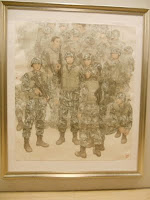 |
| East China U. of Political Science & Law |
The lecture in San Francisco alone was a great start. He began by connecting the governmental and legal system to the past - pointing out its connection to basic Chinese philosophy (Confucianism) and contrasting that foundation with the Judeo-Christian foundation of American society. Those divergent beginnings take the two societies in two very different directions. In America we focus on individualism and individual rights. We believe that leads to the greatest happiness. Confucius focuses on creating harmony through properly structuring relationships. Hierarchy and order are the most effective means to accomplishing this. That is appropriate role of government - creating the order in which a harmonious society can thrive.
 |
| No statue of Mao on Campus |
It may not be good for you, but it is good for society, for China - so that is how it is going to be. Manifestations of this idea are everywhere. The one child policy, for example. We did not talk to anyone who was happy about being limited to just one, but they all conceded that it was probably for the best given China's limited resources. It is the same story with neighborhood redevelopment -when your business is bulldozed to create a new building. Or, requiring permission to move from your birth place to the city to look for work. If everybody just did what they wanted, it would be chaos. The purpose of the law, the court, is to provide and enforce the order that makes society work.
 |
| A shared image, shared value? |
At least that was the perspective of the judge we met in Nanjing. A court is a place to seek the harmonization of interests. People come to court as a result of conflict and conflict is harmful to society. The judge’s role is to find a way to eradicate that conflict and restore peace to the community. It is a philosophy quite different from our adversarial system, which seeks justice for individuals with little regard for the consequences to society. The Chinese system does not seem that far removed from the goals of the German system. It is a question of who's interests you have primacy. In China they favor society.
Isn't that what you would expect in a communist (socialist) system? Perhaps, but China has been favoring society over individuals for millennia. That's why the Confucian/Communist alliance is not all that incongruous. Today's leaders are drawing on long-standing cultural values. Mao's Cultural Revolution was mostly a failure. The fact that you see more statues of Confucius than Mao is just evidence of which side won.















































